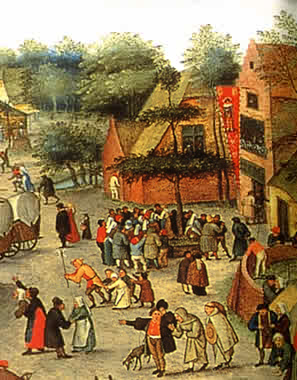The eight traditional celebrations, most of which exist today in somewhat different form, date from time immemorial. Many European festivals date back to earliest times, pre-dating even Indo-European influences. The celebrations of different cultures often share many common points. This is because their myths and mythologies are linked to the same sources: the sky, the sun, the stars, the earth, and the rhythm of the seasons.
In ancient European traditions – and in particular the Nordic and Celtic traditions – the course of the sun occupies a very important position. Our ancestors were well aware of the relationship between the sun and the rhythm of the seasons. The calendar of yearly celebrations was based on these rhythms and has continued to this day, although some name and date changes occurred as Europe was Christianised.
The calendar of celebrations revolves around the Eight Nature Festivals, which have existed throughout Europe for many hundreds of years.The calendar is based on the sun’s position at various moments of the year, and on corresponding seasonal activities.
This link between the sun’s course, the seasons, and the community made our ancestors feel that they were part of a long chain of living things including the earth, humankind and the heavens, which formed a coherent whole.
The dance lime tree, with its three-tiered structure, forms a link between the earth and the heavens, and serves as a symbol for the order of things.
download the pdf file on the Eight Nature Festivals
. |

Pieter Bruegel the Younger, Village fete with theatre (detail), after 1616. |












